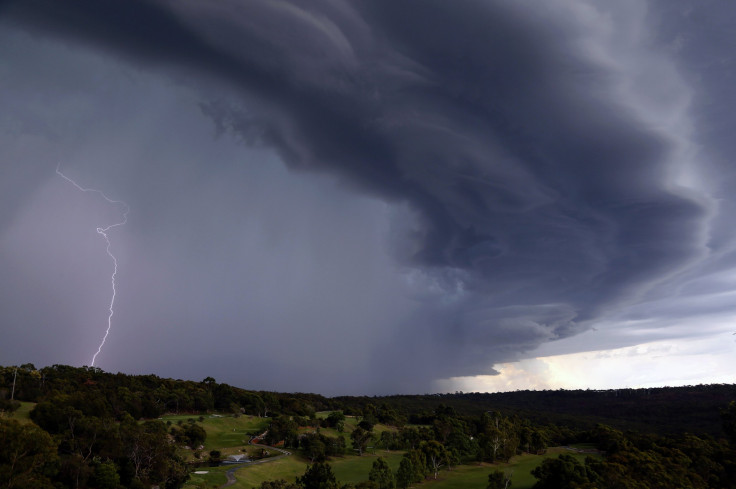AirAsia Flight 8501: Dense Clouds And Icing Could Have Led To Plane's Disappearance

As the search for the missing AirAsia Flight QZ8501 continues for the second day Monday, many have speculated on the role bad weather could have played in the plane’s disappearance. According to a statement released by the airline, minutes before contact was lost, the pilot of the ill-fated Airbus A320 sought a deviation in the flight’s path after encountering rough weather.
This is an estimated position of #QZ8501 at 23:18 UTC when AirNav Indonesia say they lost radar contact pic.twitter.com/IMMht5xbEG
— Flightradar24 (@flightradar24) December 28, 2014In recent weeks, the region has witnessed torrential rainfall and severe flooding, according to media reports. An official with Indonesia’s meteorological agency told The Wall Street Journal that dense, vertical cumulonimbus clouds, some of them rising to a height of nearly 45,000 feet had been observed in the plane’s route.
“In general, cumulonimbus is quite dangerous for aviation activities because it causes thunderstorms and heavy rain,” the unnamed official told The Journal. This could explain why, nearly 40 minutes after takeoff, the pilot had sought permission to ascend to a height of 38,000 feet from the plane's cruising altitude of 32,000 feet.
2hrs till sunset in Surabaya, weather still unsettled in region, won't help search & rescue efforts #AirAsia #QZ8501 pic.twitter.com/RuhAFUuNIM
— James Reynolds (@EarthUncutTV) December 28, 2014“Generally you want to pass upwind of a thunderstorm, because otherwise you're going to pick up more turbulence (than) if you went to the other side of the storm,” Alastair Rosenschein, a former British Airways pilot, told CNN. However, he added, going over the top of a thunderstorm is “not possible in the tropics.”
Moreover, the region where the plane was last spotted falls in the Intertropical Convergence Zone (ITCZ) -- an area near the Equator known for thunderstorms, where trade winds from the northern and southern hemispheres intersect. The ITCZ was believed to be one of the reasons behind the crash of Air France Flight 447 in June 2009, which led to the deaths of 228 people, according to media reports.
“Planes can handle very heavy rain. That’s not the issue,” Bob Marshall, CEO and founder of Earth Networks, a weather monitoring agency, told CNN. “The issue is where the tiny, small pockets of those storms that have significant updrafts and downdrafts that cause dangerous turbulence … that's what the lightning information tells you. The lightning allows you to kind of bore through the clouds and see the details of the storm and provides guidance to pilots on how to avoid it.”
However, Tim Vasquez, a former U.S. Air Force meteorologist who runs a website on weather, wrote on his website that atmospheric instability alone could not have caused the aircraft’s disappearance.
“It appears that weather was a factor, or was a compounding factor,” Vasquez wrote, adding that the plane could have been flying through clouds containing ice. “The most likely hazard, if weather was a factor, appears to be icing. This is only an assessment of best available meteorological information, and is not a final determination on the cause of the incident.”
Currently, dozens of ships and aircraft are looking for the missing plane in the Java Sea. Flight 8501 disappeared from radio contact on Sunday while flying from Surabaya in Indonesia to Singapore's Changi International Airport with 162 people on board, and it's feared that the plane might by now be on the sea floor.
© Copyright IBTimes 2024. All rights reserved.












